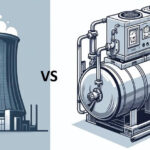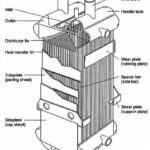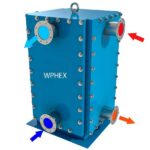Carbon capture
Also known as carbon capture and storage (CCS), refers to a range of technologies designed to capture carbon dioxide (CO2) emissions from industrial processes or power plants, and then store them in a safe and secure manner to prevent them from entering the atmosphere. Carbon capture is seen as one of the key strategies for mitigating climate change and reducing the amount of greenhouse gases that contribute to global warming.
Required steps
The process involves three basic steps: capture, transport, and storage. The first step, capture, involves capturing the CO2 emissions from industrial processes or power plants. This can be done through a variety of technologies, such as absorption, adsorption, or membrane separation. Once the CO2 is captured, it is then compressed and transported via pipeline or other means to a storage site. The final step, storage, involves safely and securely storing the CO2 in underground formations or other storage facilities.
Benefits
Carbon capture technology has been around for several decades, but has only recently gained widespread attention as a viable strategy for reducing greenhouse gas emissions. The technology has several potential benefits, including reducing the amount of CO2 emissions from industrial processes and power plants, and allowing fossil fuels to continue to be used while reducing their environmental impact. Carbon capture can also help to create new jobs in the clean energy sector, and provide opportunities for new industries to emerge.
Challenges
Despite these potential benefits, there are also several challenges associated with carbon capture technology. One of the main challenges is cost. Usage technologies can be expensive to implement, and require significant investments in infrastructure and equipment. This can make them less attractive to companies and governments that are looking to reduce emissions while also keeping costs low.
Another challenge is the issue of carbon leakage. Carbon leakage refers to the potential for CO2 emissions to be released into the atmosphere during the carbon capture process. This can happen if the capture technology is not properly designed or maintained, or if there are leaks or other problems with the storage site. Carbon leakage can negate the environmental benefits of carbon capture, and make it less effective as a climate change mitigation strategy.
Progress
Despite these challenges, there has been significant progress in the technology in recent years. Governments and companies around the world are investing in research and development to improve the efficiency and cost-effectiveness of carbon capture technologies. Some of the most promising developments in this area include advances in solvent technology, which can make carbon capture more efficient, and new storage technologies, such as carbon mineralization, which can turn CO2 into stable minerals.
Carbon capture technology is also being used in a variety of different settings, from large-scale industrial processes to smaller-scale applications. One example of this is in the production of biofuels, where carbon capture technology can be used to capture CO2 emissions from the fermentation process. This allows biofuels to be produced with a much lower carbon footprint, and can help to make them a more sustainable alternative to fossil fuels.
Another area where carbon capture technology is being used is in the production of cement. Cement production is one of the largest sources of CO2 emissions in the world, and carbon capture technology can help to reduce these emissions by capturing them during the manufacturing process. This can help to make cement production more sustainable and environmentally friendly.
Summary
Carbon capture technology has the potential to be a key strategy for reducing greenhouse gas emissions and mitigating climate change. While there are certainly challenges associated with this technology, significant progress has been made in recent years to improve its efficiency, cost-effectiveness, and reliability. As governments and companies around the world continue to invest in research and development, it is likely that carbon capture will become an increasingly important tool in the fight against climate change.
External links
Quick process and instrumentation diagram software – Draw process and instrumentation diagrams as well as process flow diagrams












